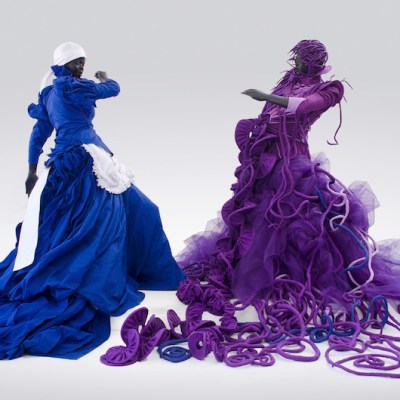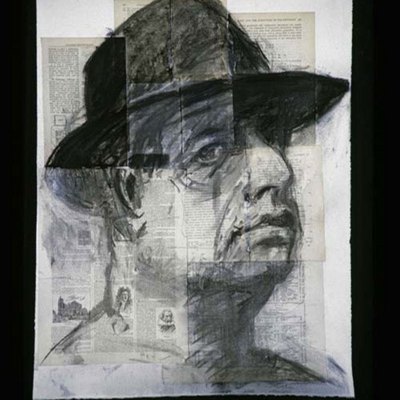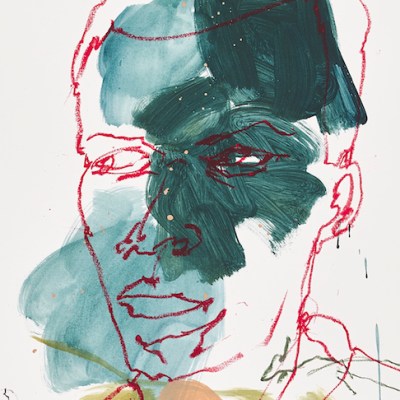Santu Mofokeng was nowhere to be found during my first attempt to meet him in early 2013. It was my first visit to South Africa. Unsure of when I’d ever be back, I decided with a friend to take an impromptu trip to Johannesburg from Cape Town, where I was staying. Jackson, a taxi driver friend of Santu’s, picked us up from the O.R. Tambo airport.
My introduction to Mofokeng’s work had come just a few months earlier in the form of a pecha-kucha talk by Jean-François Chevrier at Paris Photo. ‘Chasing Shadows’, a survey of Mofokeng’s photographs spanning 30 years, had been exhibited at the Jeu de Paume in 2011, and its effect was still reverberating. I had never come across Santu’s work, yet each of the black-and-white images that flashed across the screen pierced my consciousness. In one, Afoor Family Bedroom, Vaalrand (1988), light from an open doorway spreads onto the dirt floor and wall of a spare and otherwise pitch-black interior. The forms of an old bicycle and passing hen are softly illuminated while the enigmatic silhouette of a child, seen from behind, sharply punctuates the frame. How could it be that these pictorial marvels weren’t better known?
As Jackson drove us into the heart of the city, he explained that Santu would call, often with little notice, to deliver him hours away to townships he wanted to explore. Not knowing a soul at his destination, and carrying little more than a change of clothes, a camera, and some film, Santu would arrange for Jackson to pick him up weeks later.
Santu Mofokeng photographing in Namibia in 1997. Photo: Sabine Vogel

In Johannesburg we viewed dozens of Mofokeng’s prints courtesy of Lunetta Bartz, his representative. Rooted in the realities of apartheid South Africa, the photographs were unpredictable and varied, transcendent without being heroic. I saw in them a paradigm for humanism that is not trite or predetermined, but rather one grounded in vice, irreverence, and miracle. Upon returning to the US, I ordered the only book on Mofokeng I could find, Corinne Diserens’s engrossing catalogue for the aforementioned Jeu de Paume exhibition. I pored over it, noted the scant bibliography, and wondered if Santu had ever envisioned a book in which a sequence of his pictures, rather than his words, could be the primary carrier of narrative.
Santu and I met a few months later during the opening week of the 2013 Venice Biennale, where his work was installed in the French pavilion alongside that of Ai Weiwei, Dayanita Singh, and Romuald Karmakar as part of Germany’s presentation that year. Finding a moment of relative calm, I asked if he’d ever consider making a photobook, something I had some experience with, and could help him realise. While I spoke, Santu was looking down at his phone, preoccupied, but when I finished, he slowly lifted his head until his eyes met mine. ‘Now,’ he said with a wry smile, ‘I have a reason to live.’ Bartz later told me that creating such a book had long been a dream, but one that seemed, for one reason or another, unattainable. What none of us knew then was that he was already experiencing the first signs of an illness that would immobilise him two years later, and eventually take his life.
I was granted access to some 30,000 scans representing every negative he had in his possession, and made a preliminary selection of about 200 pictures without knowing much about their specific contexts: who, what, why, when or where. In the fall of 2013, I showed this rough cut to Gerhard Steidl, who felt as strongly as I did about the pictures, and immediately committed to publishing them in whatever form Santu and I thought best.
The following spring, I arranged to return to Johannesburg for a week to begin work with Santu. Even with the carte blanche we’d been granted, I wasn’t sure how things would go. He had no knowledge of my work, and no particular reason to trust me; I had much to learn about him and the tumultuous period of South African history that served as the backdrop for his open-ended photographic enquiry. We were either going to click or not.
Santu Mofokeng editing ‘Stories’ in Johannesburg in October 2015. Photo: Joshua Chuang

Using every possible flat surface of the showroom on Jan Smuts Avenue that Bartz had generously provided as a makeshift studio, we arranged and rearranged rows of A4 laser prints of his images until they started to make sense. We worked intensely and intuitively – mostly without speaking – as we took pictures out and shuffled others around, assessing the strength of their juxtapositions as we leaned on our respective sensibilities to build, disrupt, condense, and ultimately sharpen the sequences of photographs that unfolded before us.
By the end of the week, we had come up with five distinct narratives, and sketched out the structure for a larger, overarching project we simply called ‘Stories’. Santu’s individual pictures – previously understood as exceptional scenes plucked from his idiosyncratic peregrinations – had been scored into a more complex composition, substantially deepening the mystery and ambivalence that had long been the hallmark of his work. Santu proudly showed the maquettes we had made to his former mentor David Goldblatt, who shook his head as he paged through them, realising that finally, the full measure of the great artist so many suspected had always been there, latent, was becoming visible.
Santu Mofokeng showing David Goldblatt an early maquette for ‘Stories’ in Johannesburg in May 2014. Photo: the author. Photo: Joshua Chuang

We were able to work together a few more times over the next 16 months, finishing our collaboration just before his condition sapped his energy and muted his speech. The question of why Santu had not engaged with his own archive in this way before – something I still wonder about – was not nearly as urgent as the fact that he was doing it then. Even at the end, as Santu was relegated to laboured gesturing or writing by hand in order to communicate, his rigour, the precision of his eye, never wavered. His willingness to kill darlings and his ability to recall pictures he had not seen for decades except in his contact sheets, anticipating how they would unlock new dimensions of his work, were a constant revelation. In his final creative act, even as his body failed him, Santu was at the height of his powers.
Santu Mofokeng: Stories was published by Steidl in 2019.
Joshua Chuang is the Miriam & Ira D. Wallach Associate Director for Art, Prints and Photographs, and The Robert B. Menschel Senior Curator of Photography at New York Public Library.



